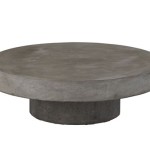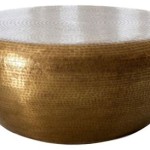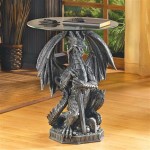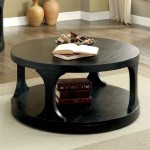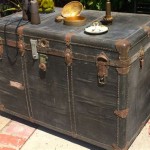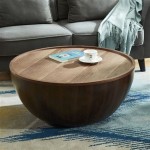How Thick Should A Tempered Glass Table Top Be?
Selecting the appropriate thickness for a tempered glass table top is a crucial decision that directly impacts its safety, durability, and overall aesthetic appeal. This choice requires a balanced consideration of several factors, including the table's size, intended use, support structure, and the desired visual effect. Insufficient thickness can lead to structural failure and potential hazards, while excessive thickness may result in unnecessary cost and an undesirable bulky appearance. The following article will explore the essential considerations to help determine the optimal thickness for your tempered glass table top.
Tempered glass, also known as safety glass, undergoes a specialized heat treatment process that significantly enhances its strength and impact resistance. This process involves heating the glass to a high temperature and then rapidly cooling it. This creates compressive stress on the surface, which makes the glass much stronger than standard annealed glass. In the event of breakage, tempered glass shatters into small, relatively harmless fragments instead of sharp, jagged shards, thereby minimizing the risk of injury. This inherent safety characteristic makes tempered glass a preferred material for tabletops, especially in environments where children or pets are present.
The primary function of a table top is to provide a stable and durable surface for various activities, whether it be dining, working, or displaying decorative items. Therefore, it is imperative that the chosen thickness is adequate to withstand the anticipated loads and stresses. Several key factors need to be carefully evaluated to make an informed decision.
Understanding Load Requirements and Table Size
The anticipated load that the tabletop will bear is a fundamental factor in determining the appropriate thickness. A coffee table designed to hold only lightweight items like books and decorative objects will require a thinner glass top compared to a dining table that needs to support heavier items such as plates, serving dishes, and potentially leaning guests. Consider the maximum weight the table top is likely to encounter under normal use conditions, and factor in a safety margin to account for unexpected or accidental loads.
The size of the table directly influences the required thickness. Larger tabletops, due to their increased span, are inherently more susceptible to bending and flexing under load. This means that a larger table will necessitate a thicker glass top to maintain structural integrity and prevent sagging or cracking. A small side table with a diameter of 24 inches can often use a thinner glass top than a dining table with a length of 72 inches. Use a table top calculator if needed. These calculators let you enter dimensions and expected load weights to arrive at an appropriate thickness for your specific table.
For smaller tables, a thickness of 1/4 inch (6mm) may be sufficient for light use. However, for medium-sized tables (36-48 inches) intended for regular use, a minimum thickness of 3/8 inch (10mm) is generally recommended. Large tables (over 48 inches) designed to support significant weight should ideally have a glass top that is at least 1/2 inch (12mm) to 3/4 inch (19mm) thick. These are general guidelines, and consulting with a glass professional is always recommended for precise calculations.
The Importance of Support Structure
The type and quality of the table's support structure play a critical role in determining the necessary glass thickness. A table with a solid, continuous base can support a thinner glass top compared to a table with only a few legs. The support structure distributes the load across the glass surface, reducing stress concentrations and minimizing the risk of breakage. A table with a perimeter frame that supports the edges of the glass top provides significantly more support than a table with legs only at the corners.
When using a table base with minimal support, such as individual legs, it's crucial to use a thicker glass top to compensate for the lack of widespread support. The thicker glass will be better able to resist bending and flexing between the support points. In such cases, consider increasing the glass thickness by at least one size increment compared to what would be recommended for a table with a more robust support system.
The use of rubber bumpers or spacers between the glass top and the support structure is highly recommended. These bumpers help to distribute the load evenly and prevent direct contact between the glass and the frame, reducing the risk of scratches, chips, and stress fractures. They also provide a slight cushioning effect, absorbing minor impacts and vibrations. Regularly inspect and replace these bumpers as needed to ensure they maintain their protective function.
Aesthetic Considerations and Edge Treatments
While structural integrity and safety are paramount, the aesthetic appearance of the glass table top is also an important consideration. The thickness of the glass contributes to the overall visual impact of the table. A thicker glass top can convey a sense of luxury and substantiality, while a thinner glass top can create a more minimalist and modern look. The choice depends on the desired style and the overall design of the room.
The edge treatment of the glass also influences its aesthetic appeal and safety. Different edge treatments, such as polished edges, beveled edges, and ogee edges, can create different visual effects. Polished edges provide a sleek and modern look, while beveled edges add a touch of elegance. Ogee edges are more ornate and traditional. The choice of edge treatment should complement the overall style of the table and the surrounding decor.
From a safety perspective, it is important to ensure that the edges are smooth and free from sharp corners. Polished edges are the safest option as they eliminate sharp edges and reduce the risk of cuts and abrasions. Beveled edges can also be safe if the bevel is wide enough to eliminate the sharpness. It is also possible to have different color treatments. While these don't affect the structural integrity of the glass, they do affect the overall look of the table.
Beyond the core factors, several other elements can influence the final decision regarding tempered glass tabletop thickness. These include the type of glass finish desired, any specific design requirements, and the overall budget for the project.
The glass finish can range from clear to frosted or tinted. Clear glass provides maximum transparency and allows the table base to be fully visible. Frosted glass offers a more diffused and private look, while tinted glass can add a touch of color and sophistication. The choice of finish can influence the perceived thickness of the glass. For example, a frosted finish may make a thinner glass top appear slightly thicker.
Specific design requirements, such as custom shapes or cutouts, can also affect the necessary thickness. Complex shapes or large cutouts can weaken the glass and may require a thicker glass top to compensate for the reduced structural integrity. It is essential to consult with a glass professional to assess the impact of these design features and determine the appropriate thickness.
The overall budget for the project is another important consideration. Thicker glass tops are generally more expensive than thinner ones. It is important to balance the desired level of safety and aesthetics with the available budget. In some cases, it may be possible to achieve the desired look and functionality with a slightly thinner glass top by optimizing the support structure or choosing a different edge treatment.
Selecting the optimal thickness for a tempered glass table top is a multi-faceted process that requires careful consideration of several factors. Load requirements, table size, support structure, aesthetic preferences, and budget all play a role in the final decision. By thoroughly evaluating these factors and consulting with experienced glass professionals, you can ensure that your tempered glass table top is not only safe and durable but also visually appealing and perfectly suited to its intended use.
In conclusion, choosing the proper thickness is not just about aesthetics; it's about ensuring the safety and longevity of the table. By considering all relevant factors, one can confidently make an informed decision that meets both functional and design requirements.

Table Top Tempered Glass

Glass Table Tops Frequently Asked Questions Majestic
How Thick Should A Glass Tabletop Be Everything You Need To Know Demers

Glass Table Top 36 X 60 Rectangle 3 4 Thick Tempered

Fab Glass And Mirror 32 In Clear Round Table Top 1 2 Thickness Tempered Beveled Edge Polished 32rt12thbean The Home Depot

Fab Glass And Mirror 24 In X 48 Clear E Oval Elliptical 1 2 Thick Table Top Beveled Tempered Teo 24x48ov12th The Home Depot

34 Square Glass Table Top Tempered 1 4 Thick Flat Polished Eased Corners By Dulles Com

Dropship 28 Inch Round Tempered Glass Table Top Clear 3 8 Thick Beveled Polished Edge To At A Lower Doba

30 X 34 Rectangle Tempered Glass Table Top

Dropship 40 Inch Round Tempered Glass Table Top Clear 1 2 Thick Beveled Polished Edge To At A Lower Doba
Related Posts

